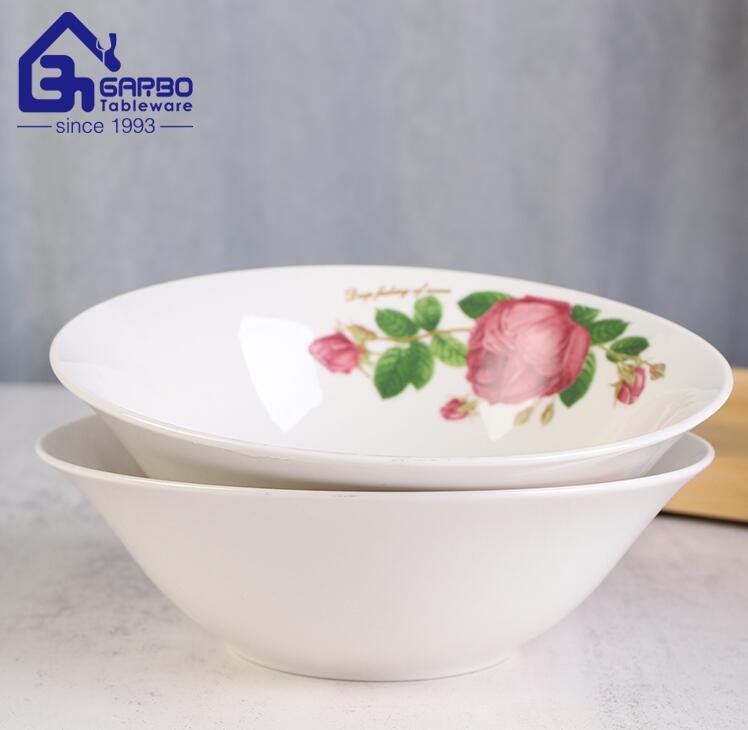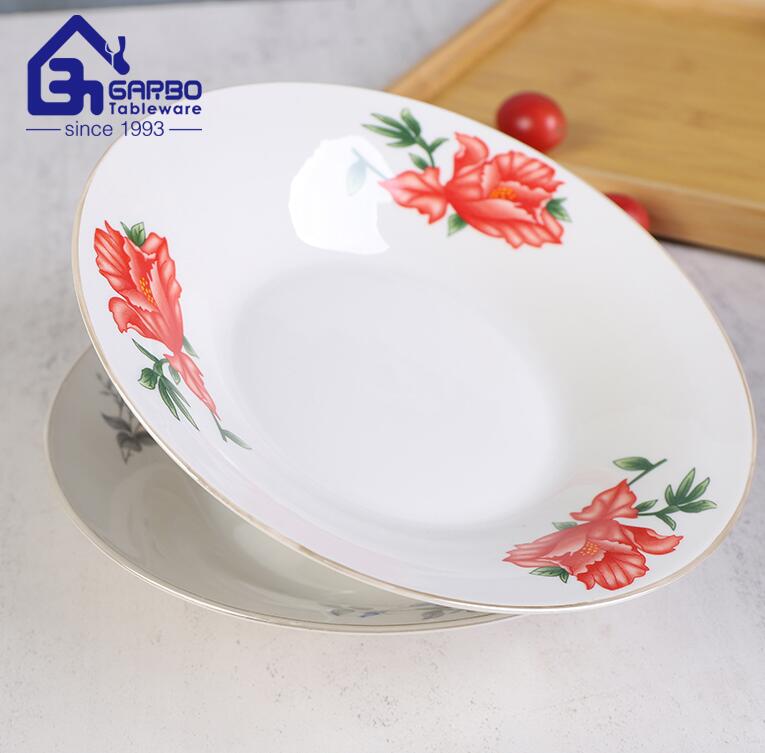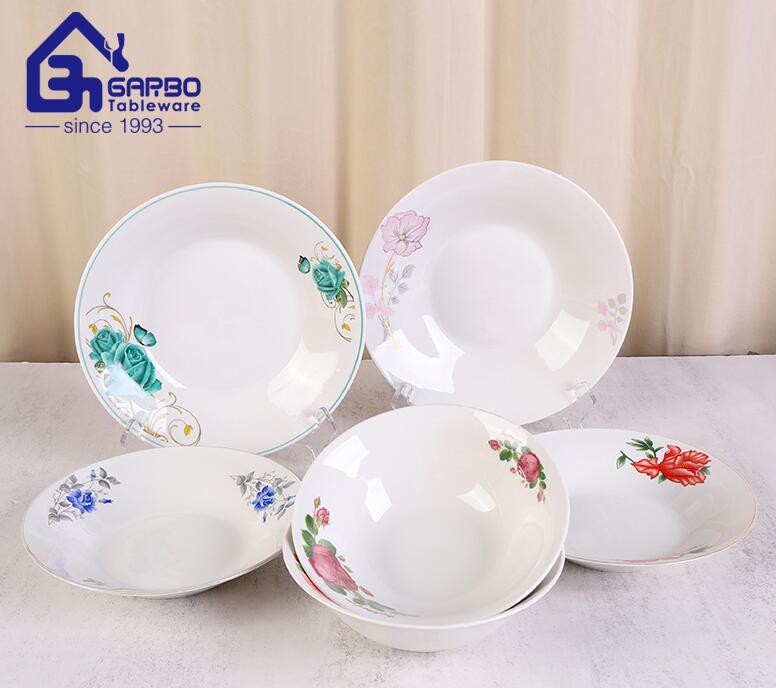Pulished on Jun. 27, 2023
When it comes to selecting tableware, glass and ceramic are two popular choices. Both materials have their unique advantages and considerations. In this article, we will compare the advantages of glass and ceramic tableware and provide guidance on how to choose the most suitable option for your needs and preferences.

Advantages of ceramic tableware:
Durability and Sturdiness: Ceramic tableware, such as stoneware and porcelain, is known for its durability and strength. It can withstand daily use, including cutting and scraping, without easily chipping or breaking. Ceramic tableware is a reliable choice for families and individuals seeking long-lasting and resilient dinnerware.
Heat Retention and Even Cooking: Ceramic tableware has excellent heat retention properties, keeping your food warm for longer periods. It is particularly advantageous for serving hot dishes, soups, and stews. Additionally, ceramic bakeware allows for even heat distribution, resulting in evenly cooked meals and baked goods.

Aesthetic Variety and Customization: Ceramic tableware offers a wide range of designs, colors, and patterns to suit different styles and preferences. From rustic earthenware to elegant porcelain, ceramic tableware allows for customization and personalization of your dining experience. It can be an extension of your personal style and add charm to your table setting.
Advantages of Glass Tableware:
Glass tableware offers a distinct visual appeal due to its transparency. It allows you to showcase the colors and presentation of your culinary creations. Glassware also creates an elegant and modern table setting, making it ideal for formal occasions and showcasing layered desserts or colorful beverages.
Glass tableware is versatile and can be used for both everyday meals and special occasions. It is suitable for serving a wide range of foods, including hot and cold dishes, as glass is resistant to temperature changes. Glassware is also compatible with dishwashers, making it convenient for cleaning and maintenance.
High-quality glass tableware is known for its durability and resistance to chipping and scratching. It can withstand regular use and maintain its clarity and shine over time. However, it is important to handle glassware with care to prevent accidental breakage.
How to choosing the Right Tableware:
Evaluate your needs, lifestyle, and dining habits. If you frequently entertain guests or prefer a modern aesthetic, glass tableware might be a suitable choice. If durability and heat retention are priorities, ceramic tableware would be a better fit. Consider whether you prioritize visual appeal, versatility, or long-lasting performance.

Consider your preferences for handling and maintenance. Glassware is generally dishwasher-safe and easy to clean. Ceramic tableware may have specific care instructions, such as handwashing or avoiding extreme temperature changes. Factor in your willingness to adhere to these instructions when making your choice.
You are not limited to choosing exclusively glass or ceramic tableware. You can mix and match both materials to create an eclectic and personalized table setting. Use glassware for beverages or desserts, while opting for ceramic plates and bowls for the main course. Mixing materials allows you to enjoy the benefits of both glass and ceramic tableware.
Glass and ceramic tableware offer distinct advantages and considerations. Glassware provides transparency, versatility, and visual appeal, while ceramic tableware offers durability, heat retention, and aesthetic variety. When choosing tableware, consider your purpose, lifestyle, handling preferences, and willingness to adhere to maintenance requirements. Additionally, don't be afraid to mix and match materials for a unique and personalized table setting that suits your style and enhances